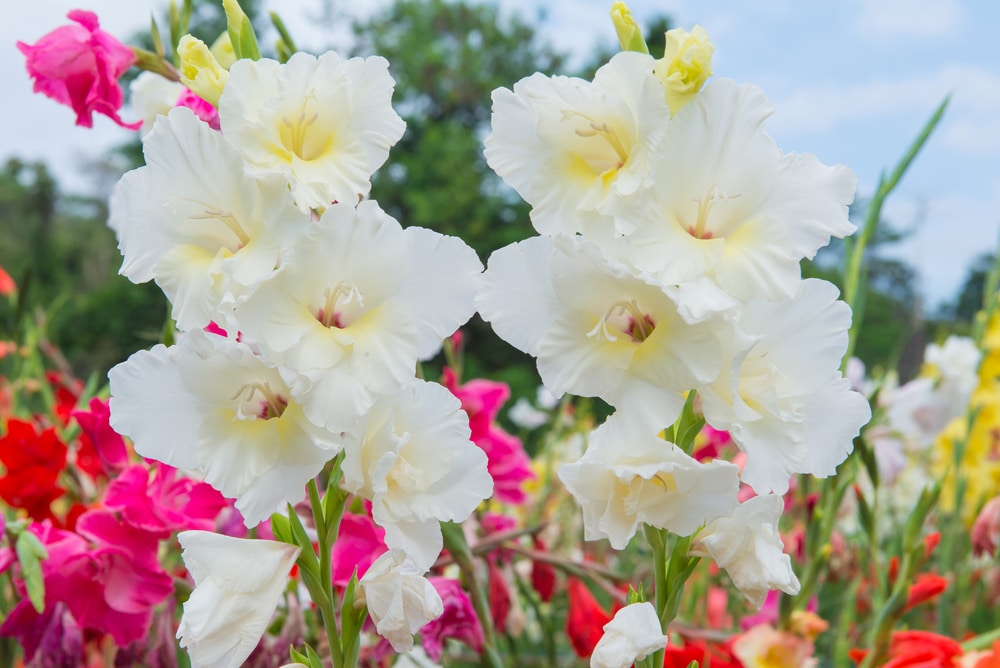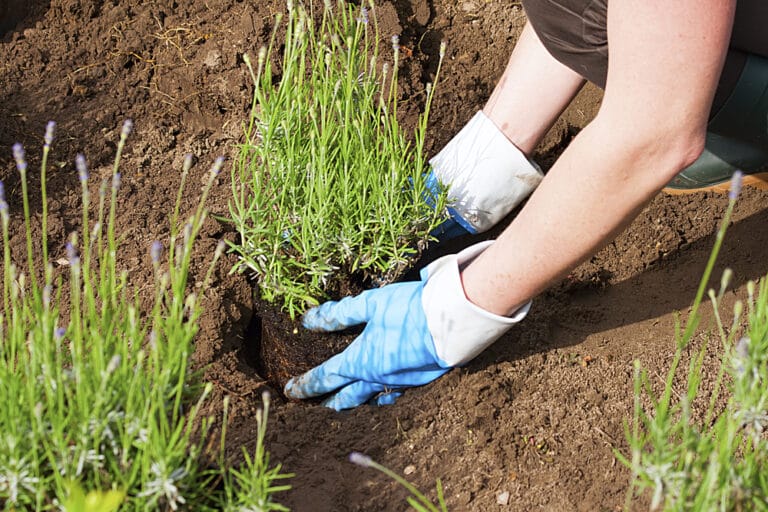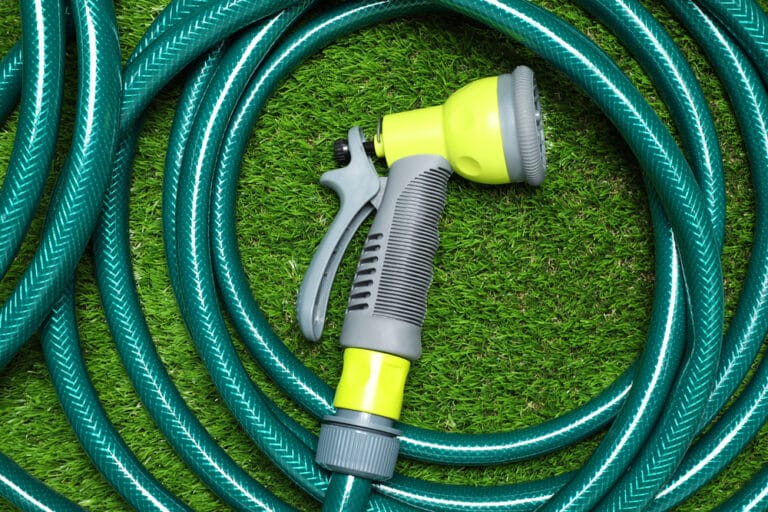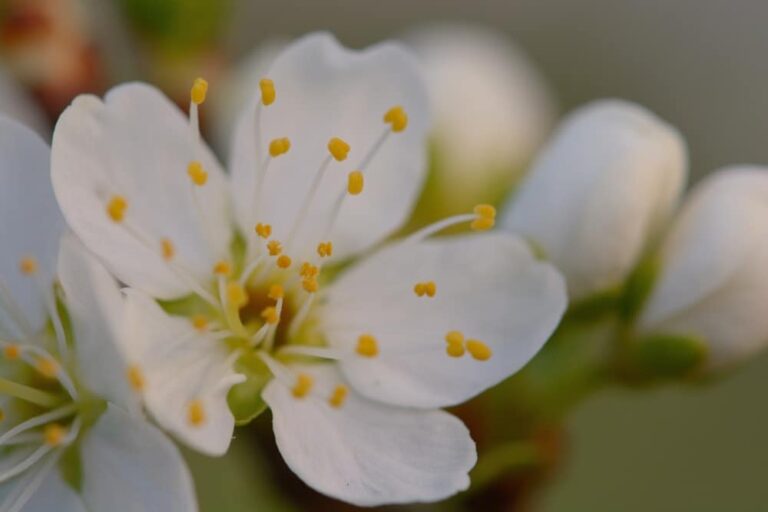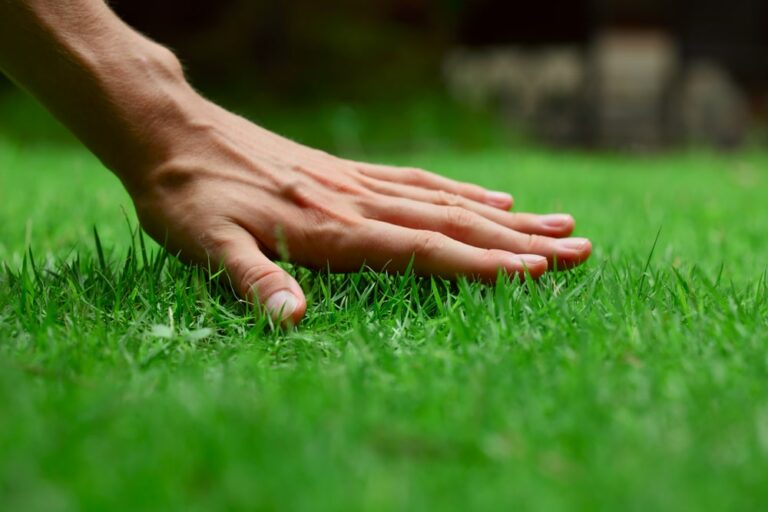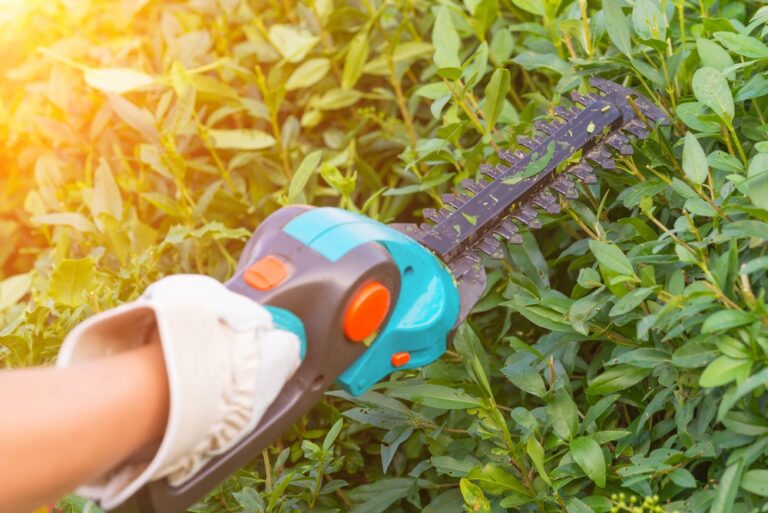Looking after gladioli can be tricky for beginners, but with this guide, you’ll be able to get the most out of your flowers! This how-to guide will teach you how to look after gladioli. We will discuss how and when to water them, the best soil to use, and how much sunlight they require.
We’ll also talk about fertilising and deadheading your plants. Follow these tips, and your gladioli will bloom beautifully in no time!
Why Grow Gladiolus Plants
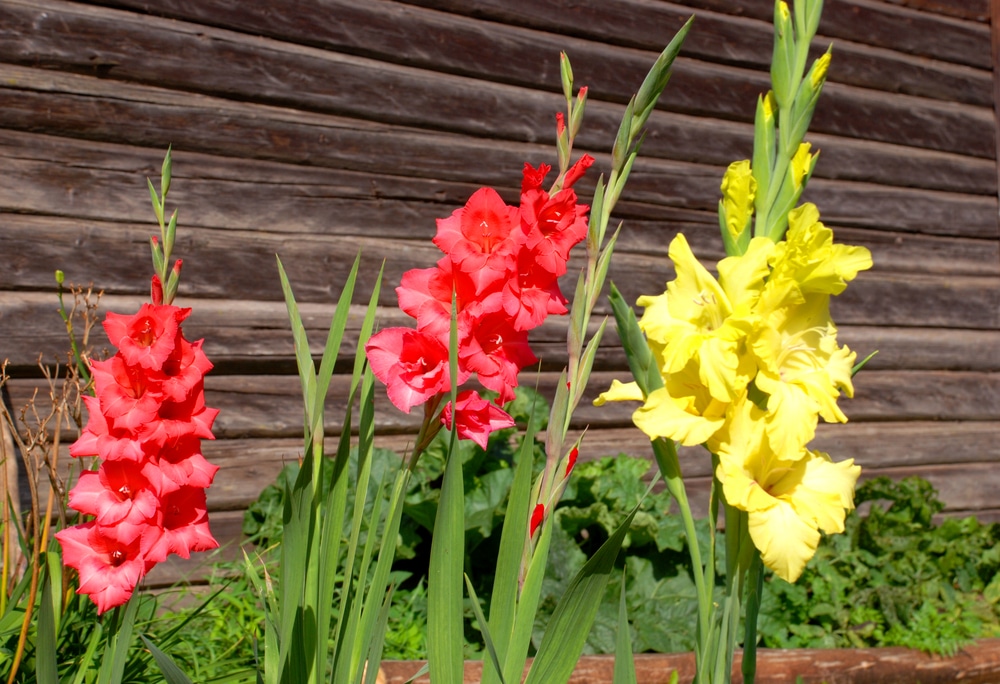
Gladiolus plants, famous for their lovely blooms and extra-tall flower spikes, are great for any garden. You can choose something that appeals to you because they come in a variety of colours and sizes.
Gladiolus flowers grow from bulbs that can last up to two years if properly cared for. The flowers are great for indoor decorations and beautiful arrangements. They’re also popular with butterflies and hummingbirds.
Growing gladioli may seem challenging at first, but they are easy to grow and maintain, requiring just a little bit of care to thrive. They’re also relatively inexpensive to grow and maintain compared with other types of flowers like roses or tulips! You’ll find that these plants will reward your efforts by blooming all summer long with minimal effort on your part!
When to Plant Gladiolus Bulbs
Gladioli are best planted in late winter or early spring when the soil temperature has warmed up to at least 50 degrees F. You can find gladiolus bulbs at your local garden centre or online.
Gladioli should be planted at least six weeks before your first frost date so that they are frost-free and have time to bloom before winter sets in.
Where to Plant Gladioli
Gladioli prefer well-drained soil that is rich in organic matter. A soil mix made for perennials or flowers will work well, or you can make your own with two parts compost, one part sand and one part topsoil.
How to Plant Gladioli Corms: Step-by-Step Guide
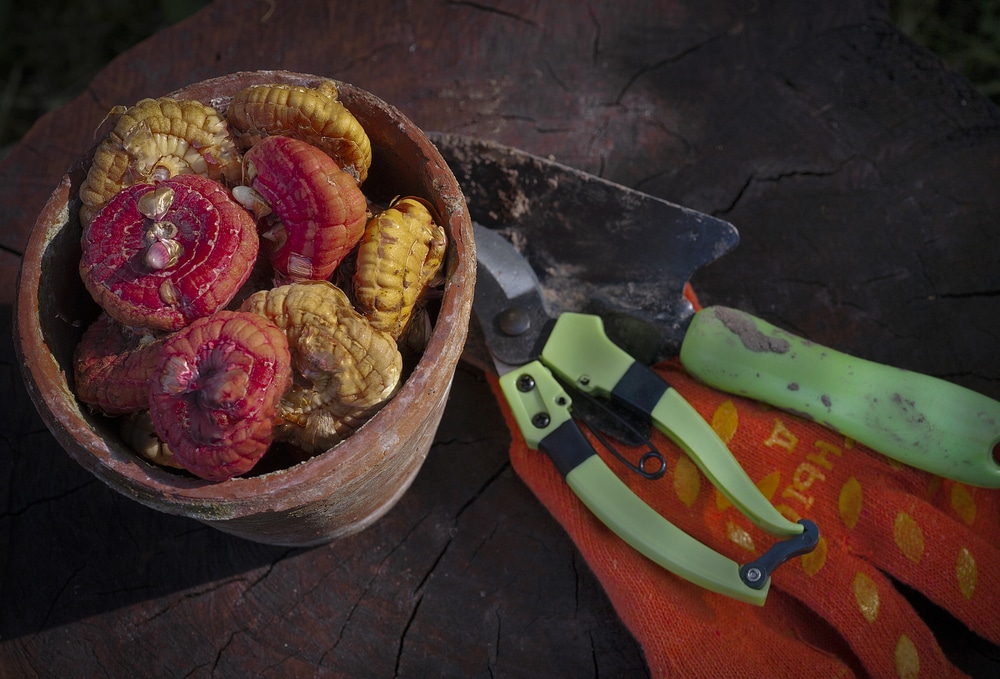
Here are step-by-step instructions on how to plant gladioli in your garden.
Materials Needed:
- Corms – larger than an inch
- Spade or shovel
- Hose or watering can
- Well-drained soil
- Compost
- A place to store corms over the winter
Step 1: Choose a Spot in Your Garden
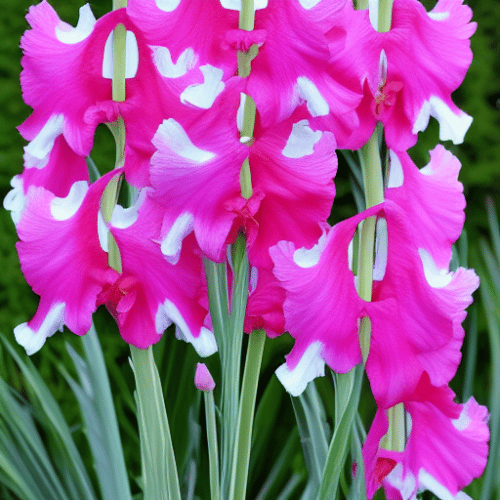
Choose a spot in your lawn that gets at least six hours of sun each day and has well-drained.
Prepare your soil by getting rid of all weeds and then compost or organic matter into the soil.
Step 2: Dig a Hole for Each Corm
Dig a hole in the soil that is deep enough so that the corm will be buried with two inches of soil above it.
Step 3: Place the Corm in the Hole
Place your corms in it, pointed end up. Ensure the corms are evenly spaced out, so they have room to grow!
If you aim to grow gladioli to harvest cut flowers, it is best to plant them in rows for easier maintenance. However, if you plan to use them as borders along with other flowers, plant the gladiolus corms in groups of at least six instead.
Step 4: Fill in the Hole and Tamp Down the Soil
Cover the hole and tamp down the soil to have no air pockets around the corm.
Step 5: Water the Soil
Water the soil until it is damp but not saturated.
How to Care for Gladiolus Plants
To care for gladioli and keep them looking their best during the growing season, follow these simple tips:
Water Regularly
Gladioli prefer moist soil with good drainage, so keep the area around them well-watered but not soggy or waterlogged.
You may have to provide supplemental irrigation if you live in warmer regions where rainfall is scarce. You can add thick mulch around the plants to keep the soil moist.
Place Under Direct Sunlight
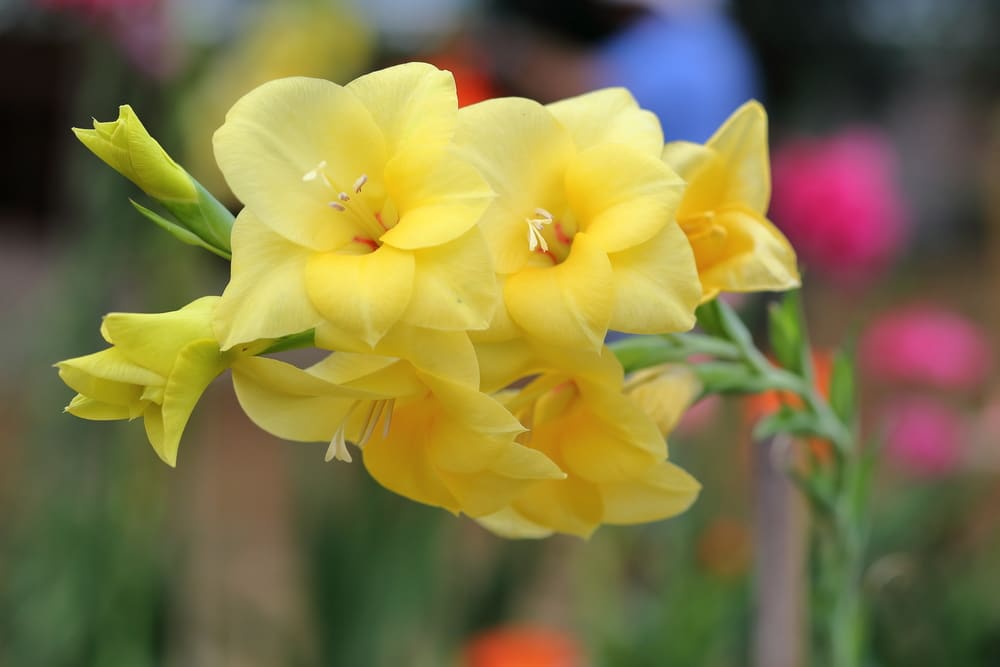
Gladioli need at least six hours of direct sunlight per day to thrive. It’s okay if they receive some shade during the hottest part of the day or when temperatures are cool but not cold enough for frost damage to occur.
Fertilise
Gladioli plants need a steady diet of nitrogen, phosphorus, and potassium to bloom properly. Start fertilising with a balanced fertiliser when a flower spike emerges.
Be careful not to over-fertilise, leading to weaker plants with root rot problems.
Prune Any Dead Flowers
Prune dead flowers as they appear so that new ones can take their place.
Deadhead the Plants
Gladioli should be deadheaded as soon as possible after flowering is over so that they don’t go to seed (or worse yet, produce seeds) in your garden bed or potting soil mixture! This will allow the plant’s energy to develop new flowers instead. Cut the flower stem down to the plant’s using sharp scissors.
Divide the Gladioli Clumps
In spring, it would be best to divide clumps of gladioli every few years so that they continue to grow and bloom well. Use a shovel or garden fork to dig up the bulbs, then divide them into smaller groups with at least four or five new leaves per bulb.
Replant these divisions in your garden beds or pots as soon as possible after dividing them!
Store the Bulbs for Winter
Gladioli bulbs can rot during wet and humid weather. They can be stored over winter by digging them out of their planting location and placing them in a cool, dry location with good air circulation. Wrap the bulbs loosely with newspaper or clean rags before storing them away from frost-prone areas like garages or sheds.
Caring for Gladioli
Gladiolus plants may seem like a lot of work to take care of, but with a little bit of TLC, they will reward you with beautiful blooms for your flower arrangements!
Follow these handy tips on how to look after gladioli, and you can be sure that your plants will stay healthy and look their best. For more gardening tips and tricks, be sure to check out our blog!

